Tire rubbing on your fender can be an annoying problem, as it can cause damage to both the tire and the fender. In some cases, it can also lead to excessive wear of components and premature failure of parts. Therefore, it is important to take steps to fix tire rubbing as soon as possible to prevent further damage and keep your vehicle in optimal condition.
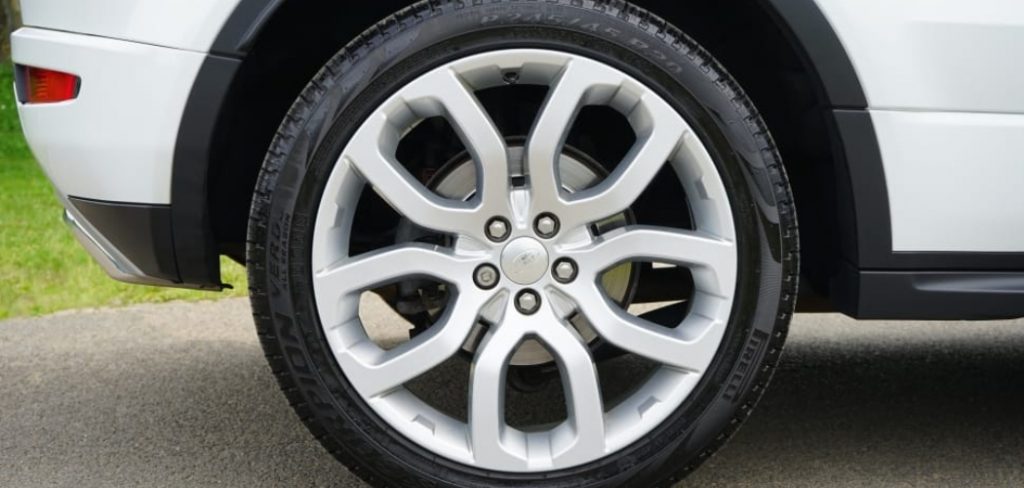
The benefit of fixing tire rubbing on fenders is that it can help improve the car’s performance, fuel efficiency, and safety. The main advantage of fixing tire rubs is that it prevents premature tire wear, which can reduce the cost of replacing tires over time.
Additionally, when a vehicle’s tires are properly aligned, they provide better traction, handling, and braking. Properly aligned tires can also reduce vibration when driving at higher speeds for a more comfortable ride. In this blog post, You will learn in detail how to fix tire rubbing on fender.
Step by Step Processes for How to Fix Tire Rubbing on Fender
Step 1: Inspect the Tire
First, inspect the tire to determine what may be causing the rubbing. Inspect for worn treads, bulges, and uneven wear that could all be contributing factors. Misalignment of the vehicle can often create excessive rubbing when turning or cornering.
Step 2: Check the Fender Flares
The next step is to check the fender flares. This can usually be done by running your hand along the flare’s edge to feel for any obstructions that may be causing tire contact with the fender. If you find any, they should be removed or adjusted so that they do not interfere with the tire.
Step 3: Adjust Suspension Components
Inspect suspension components such as shocks and struts for signs of wear or damage. If necessary, replace them to ensure proper ride height and reduce rubbing when cornering or turning. Be sure to have a professional perform any adjustments that may be needed to ensure they are done properly.
Step 4: Adjust Tire Pressure
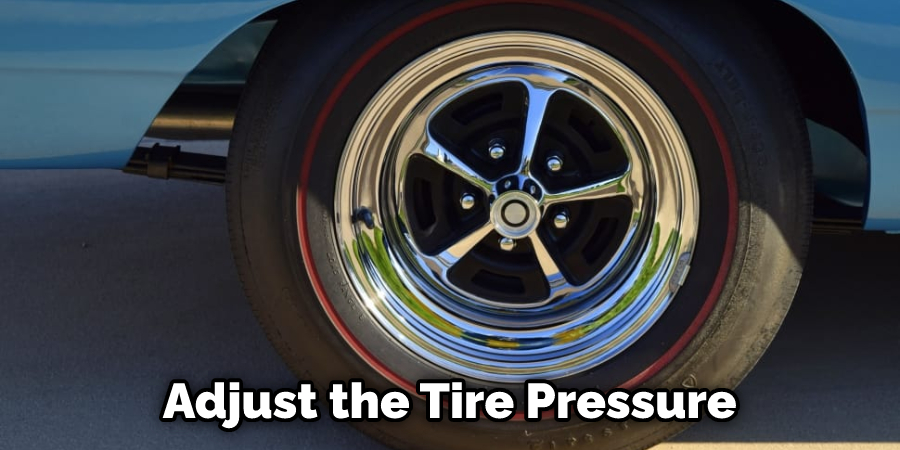
Finally, adjust the tire pressure according to the manufacturer’s recommendation. This will help equalize the contact patch of the tires, reducing excessive wear and improving handling characteristics. Depending on your vehicle, you may need to adjust each tire independently to achieve optimal performance.
Following these steps should help you resolve any tire rubbing on fender issues that may be affecting your vehicle. If the problem persists, have a professional take a look to ensure all components are functioning properly.
Tips for How to Fix Tire Rubbing on Fender
- Wear gloves and safety glasses to protect your hands and eyes from any flying debris when working on your fender or tire.
- Put the car in park, turn off the engine and apply the parking brake before getting started.
- Lift up the car with a jack and place it securely on jack stands.
- Firmly grab the tire and pull it away from the fender to determine how much rubbing is occurring.
- If there is a small amount of rubbing, you can use sandpaper or an air file to delicately remove any excess material from the offending area on the fender or tire.
- If you need to make a bigger adjustment to the fender or tire, use a hammer and chisel or drill holes in the appropriate area.
- Use tape on the area where contact occurs between the fender and tire so you can measure how much material needs to be removed.
- When you have finished, make sure to test the wheel and fender rubbing before taking the car off the jack stands. If you are still experiencing problems with a tire rub, consult a professional mechanic for assistance.
Safety should always come first when performing any work on your vehicle. Make sure to follow all necessary precautions to ensure that you and your car are safe. Following these steps can help you fix tire rubbing on your fender quickly and safely.
How Often Should You Check for Signs of Tire Rubbing on Your Fender?
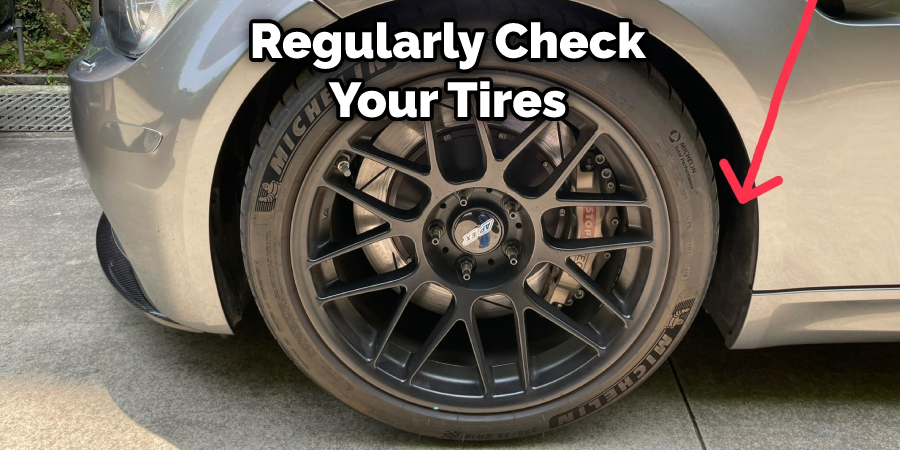
It is important to regularly check your tires for signs of rubbing on the fender. You want to ensure that the tires are not too close to the fender, as this can cause damage to both the tire and the fender itself. If you notice any rub marks or discoloration on either component, it is time to investigate further.
If your car is equipped with a spare tire, it should be checked too. The same rule applies to the fender and wheel well of the spare—if there is excessive contact between any of these components, you need to address it before continuing on your journey.
It’s also worth checking the wheel alignment, as it may be causing the tire to rub against the fender. If you do notice that the wheel alignment needs adjusting, take your car to a professional mechanic for a thorough inspection and adjustment.
Finally, if you are unsure about any of these steps or need advice on fixing tire rubbing on the fender, consult with an experienced auto technician. They will be able to provide you with detailed instructions on how to address the issue and get your car running smoothly again. With their help, you can ensure that your tires are safe and remain undamaged.
Are There Any Other Preventative Steps You Can Take to Lessen the Likelihood of Tire Rubs on Your Fender?
The best way to minimize the likelihood of tire rubs is to keep a close eye on your tires and wheels. Ensure they are properly inflated, in good condition, and aligned correctly. You should also pay attention to how you drive – avoid hitting curbs or potholes that could cause the wheel alignment to shift. Additionally, you should inspect the tires and rims every time you go in for an oil change or tire rotation.
If your vehicle has aftermarket wheels or wider tires, you should also make sure to use appropriate wheel spacers. These are used to offset the distance between the tire and the fender so that there is no contact when turning.
If you don’t have the correct spacers, you can also adjust your suspension to increase the clearance between the tire and fender. Finally, if you’re using tires with a high profile (tall sidewalls), consider switching them out for a lower-profile tire that will reduce the risk of rubbing.
How Can You Inspect and Repair Any Damage to the Fender Caused by Tire Rubs?
To properly inspect and repair any damage caused by tire rubs, you’ll first need to determine the source of the rubbing. The most common causes of tire rubs are under-inflated tires, worn suspension components, misaligned wheels, and an excessively wide wheel/tire combination.
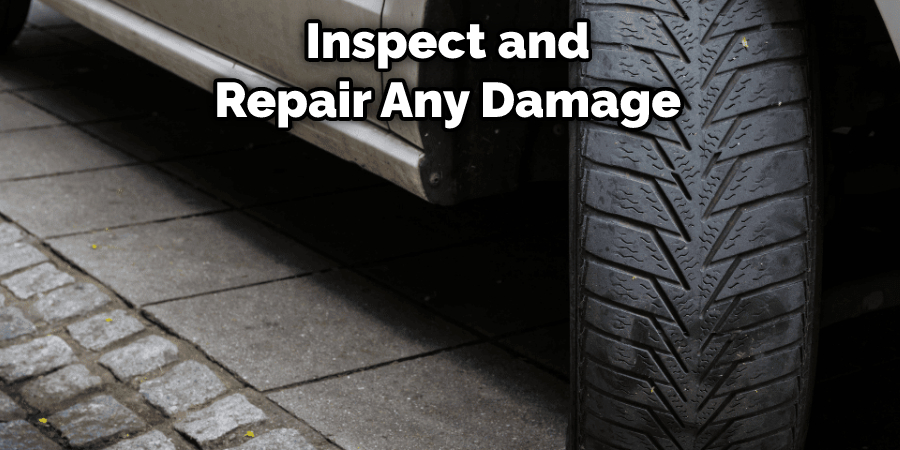
Once you have identified the root cause of the tire rubs, you can begin inspecting and repairing the damage. Start by using a flashlight to inspect the fender for any visible signs of damage, such as cracks, gouges, or other deformities. Use an appropriate tool (e.g., pliers or metal files) to smooth out any rough edges if any are found.
Next, if the fender is dented or misshapen, you’ll need to gently use a hammer and anvil to reshape the metal back into its original form. Be sure to take your time during this process and ensure that all of the pieces are in their correct places before continuing. Finally, apply a coat of paint to the fender.
This will help protect it from further damage and keep it looking great. Once everything is in place, you can be sure that your fender will no longer suffer from any tire rubs.
Conclusion
In conclusion, fixing a tire rubbing on the fender is a relatively simple process that can be done with basic tools and supplies. Depending on the severity of the rubbing, it may require more intensive measures such as replacing or reinforcing fenders, installing wheel spacers, or using wheel alignment to correct any uneven wear.
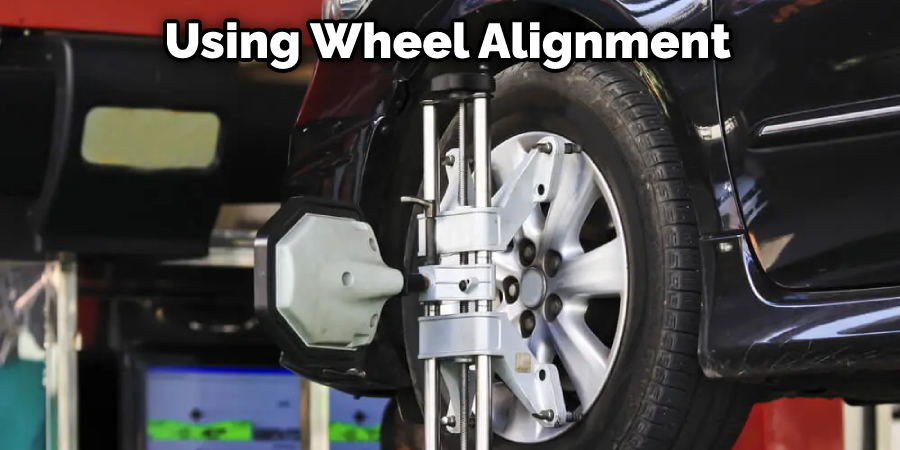
Regardless of what route you take to fix the problem, it is important to take the time to properly inspect your tires and fender regularly so that you can catch any potential issues before they become a bigger problem down the road.
Taking good care of your vehicle’s wheel alignment, suspension components, and body panels will ensure that your tire rubbing problems do not cause long-term damage or excessive wear. I hope this article has been beneficial for learning how to fix tire rubbing on fender. Make Sure the precautionary measures are followed chronologically.
